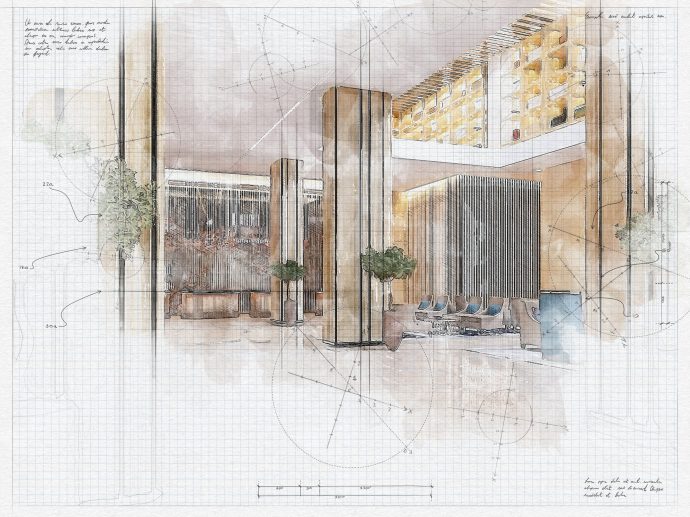Categories more
- Adventures (17)
- Arts / Collectables (15)
- Automotive (37)
- Aviation (11)
- Bath, Body, & Health (77)
- Children (6)
- Cigars / Spirits (32)
- Cuisine (16)
- Design/Architecture (22)
- Electronics (13)
- Entertainment (4)
- Event Planning (5)
- Fashion (46)
- Finance (9)
- Gifts / Misc (6)
- Home Decor (45)
- Jewelry (41)
- Pets (3)
- Philanthropy (1)
- Real Estate (16)
- Services (23)
- Sports / Golf (14)
- Vacation / Travel (60)
- Watches / Pens (15)
- Wines / Vines (24)
- Yachting / Boating (17)
Published
07/19/2022 by Samer Khdeir - SSKHotel interior design is crucial when it comes to creating a positive experience for guests, staff, and visitors. An exceptionally designed hotel reflects a vision, highlights all amenities on offer, and targets intended audiences. But hotel interior design is more than just the sum of meticulous aesthetics and expensive furniture. So much work goes into translating the needs of a client while also surpassing their requirements to realise their ideas with expertise and excellence.
However, many hotel developers fail to look beyond the aesthetic aspect of interior design, missing another equally important facet: functionality. For example, when it came to designing a hotel in Mecca, Saudi Arabia, a city that gets incredibly congested around Hajj, one of the primary challenges the design needed to address was how to keep the flow of traffic and people going while also allowing access to the premises. As such, interior design transcends artistry to encapsulate topography, environment, sociology, and even the culture of its surrounding residents and visitors.
Why hotel interior design matters
Bland hotels struggle to connect with those seeking a step above in their choice of temporary residence. Research has shown that guests continuously choose properties that cater to their needs and expectations of what they deem the ideal hotel. A well-designed space can target the intended audience demographic, help position the hotel among its competition, and gain recognition from the community, among many other reasons.
Blending in
Hotels are increasingly being designed to blend in with their surroundings. This is a feature that can be accomplished by employing large windows, doors and balconies to fuse internal and external spaces and grant easy access to outdoor amenities. It can also be achieved by utilising natural features that reflect the landscape surrounding the hotel.
Marrying form and function
Beautiful hotel interior design should never be prioritised over function. Room features and hotel facilities, for example, should be accessible and easy to use for new guests. This may sound like a simple procedure, but it is surprisingly trickier than one may imagine. This also applies to public spaces where every detail is carefully considered: lobbies are designed the way they are to offer an open space for foot traffic and be accessible for guests with mobility issues, and the choice of colour plays a fundamental role in defining the experiences of both guests and staff.
Let there be light
An overlooked element that brings out the spirit of a hotel is its lighting. Satisfying both practical and aesthetic purposes, the right lighting will imbue a space with a relaxed and rejuvenating ambience. Conversely, using the wrong light shades or sources can tamper with guests' moods, making them feel subconsciously irritated.
Get interior design help from pros
When it comes to interior design, hoteliers must not wing it themselves or regard the craft as an afterthought. The design of a space is of utmost importance to get right, so employing the assistance of a great designer who has experience working in the hospitality sector and is capable of building familiarity with your brand and goals is critical and may be the difference between the success of a hotel and its failure.
So much goes into the interior design of a hotel, and working with the right people will help you translate and realise your vision and potentially surpass your expectations to deliver an aesthetic that equally serves customers, visitors and staff. The next time you walk into a hotel, stop to consider the countless hours that were invested in every little detail, from the choice of colour and material to the signage and navigation that impact your opinion of a location and space.















